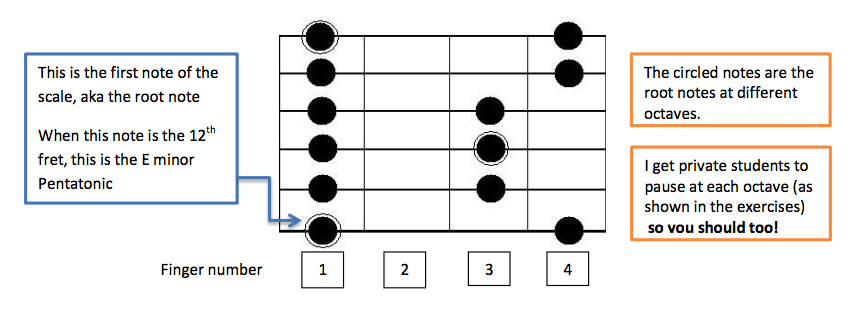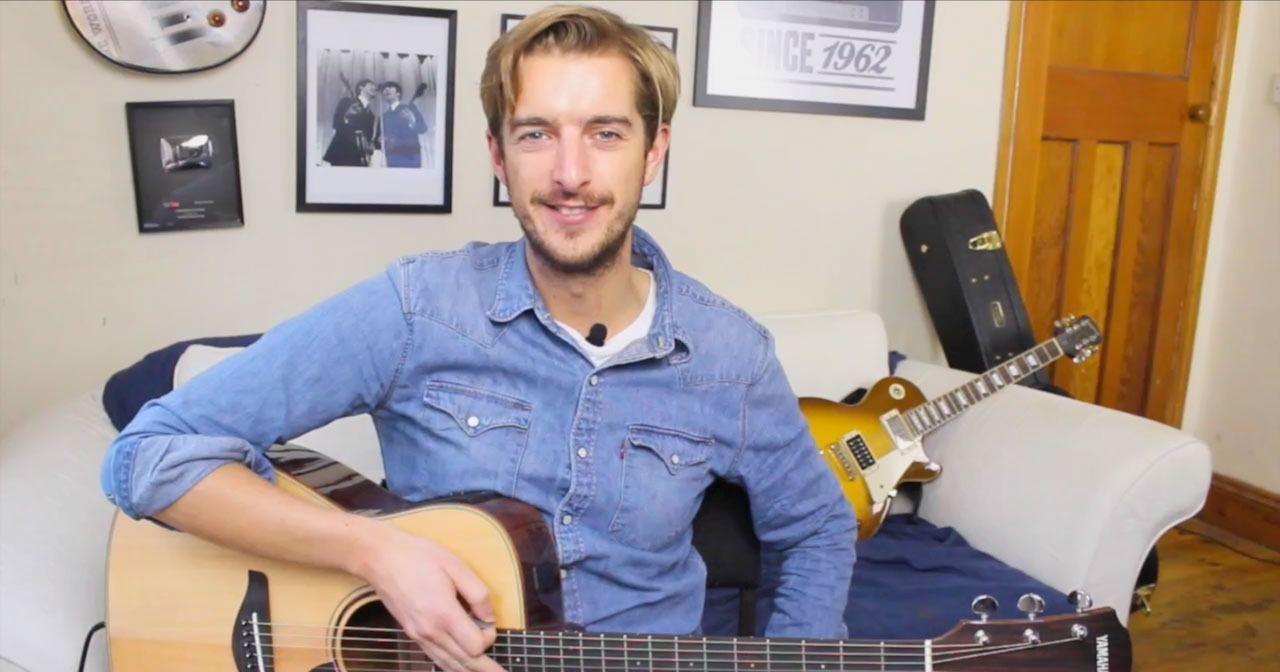In this video
This scale allows you to learn the most common set of notes used in the riffs, melodies and guitar solos in Rock, Blues and Indie music. Everyone from Led Zeppelin to The Arctic Monkeys uses this scale. There are 2 ways we can notate this scale (great news- neither involves having to read music!)
One method is called a Shape Box and the other is with guitar TAB. Each has pros and cons, so we should learn to use both. Shape boxes are a great way to visualise where to place your fingers, and therefore memorise it easier. It is less useful for showing the order of the notes, for that, we need to use TAB (aka guitar Tablature).
At the bottom of this page you can find the full scale in TAB in E, now with interactive TAB! This should be practiced until it can be played 4 times in a cycle at 80 bpm without making any note mistakes. Use the TAB player to loop the TAB, set the bpm to 80bpm (or start at 50 or 60 bpm and work up to 80) and play along!
Lower Octave - E minor pentatonic
These notes are generally used for riffs e.g. 'Sunshine Of Your Love' by Cream (tutorial available on website and Andy Guitar app)
Higher Octave - E minor pentatonic
These notes are generally used for solos e.g. the solo of 'Come As You Are' by Nirvana
Minor Pentatonic ‘shape box’

This is similar to a chord box, but you would only place one finger down at a time. Imagine dipping your fingers in paint then playing this scale- this is what your fret board would look like! Scales have a root note that gives its name, just like chords. Therefore the first note you start on gives the scale its letter name. This ‘shape box’ shows you this shape, then you can move it up and down the fret board to play it in any Key!
How to practice The Minor Pentatonic Scale
This section shows you exactly how I’d like you to practice this scale, as there are right and wrong ways to do it, along with my personal recommendations.

The goal is to play each of the following exercises 4 times through by cycling the riff. This is where we repeat the notes evenly without playing the first or last note twice, so we play them in a cycle, hence cycling the riff! All the following examples are in the key of E

Play along with Andy!
Play along with Andy with the interactive tab below! Using the buttons at the bottom you can:
Slow the video down (or speed it up!)
Turn on a metronome
See a picture of a fretboard with the notes appearing as they are being played
View the interactive tab in full screen
Play along with Andy!
Course Outline
Acoustic Blues Basics

